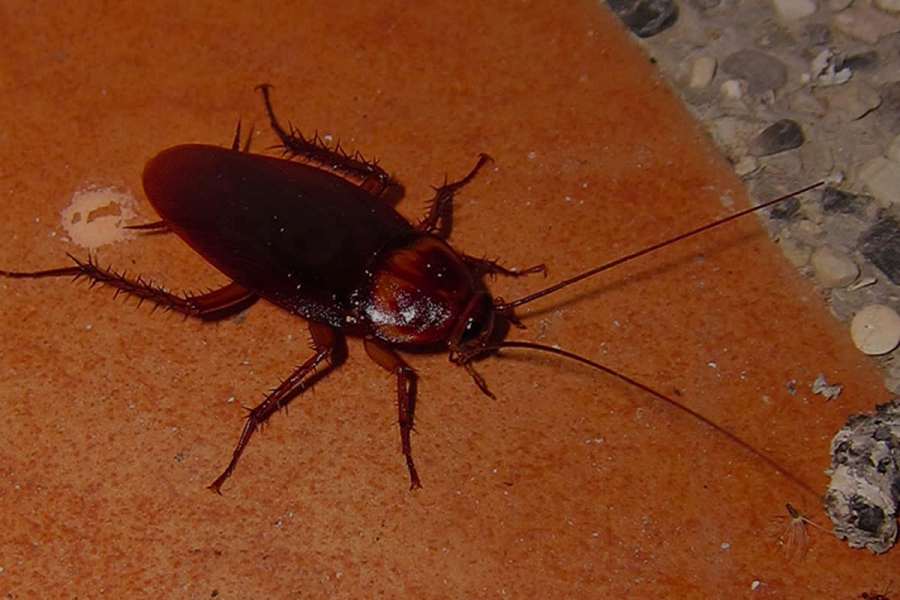One thing that a lot of people can agree on is that cockroaches are pests, and we don’t want them around. However, there have been people who killed the wrong bugs by mistaking them for cockroaches. So I want to show the photos of bugs that look like cockroaches but somehow better. You are going to see 7 types of bugs that look like cockroaches or similar to them in the list below.
Contents
1. Bugs That Look Like Cockroaches
Bug #1: Asian Long-Horned Beetle
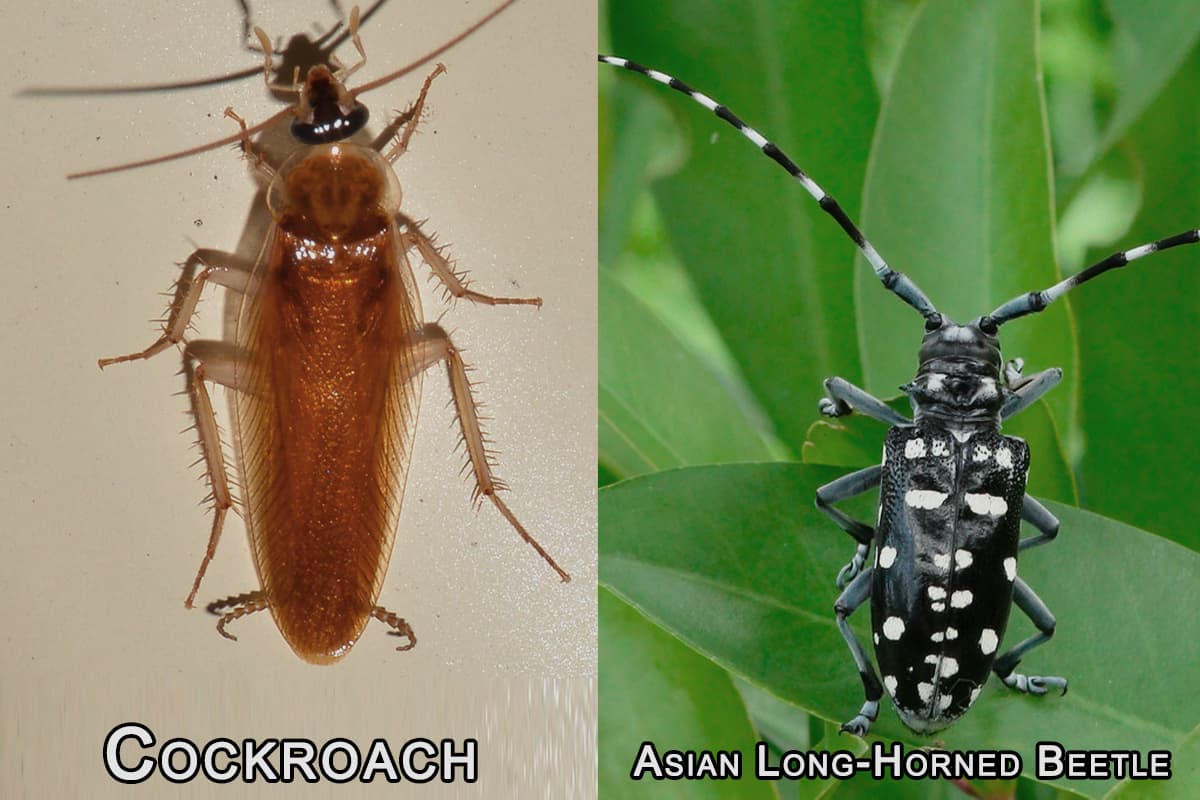
An Asian long-horned beetle has a black body with around 20 specks of white on its back. Usually, this type of beetle is larger than household cockroaches, but their long antennae almost resemble the roaches. Also, Asian long-horned beetles can fly for a short period of time so that they can freak out some people speciously. Because of the similar traits, people tend to kill them on the spot if they see them at home.
Asian long-horned beetles do not cause any harm to humans at all, at least not in the house. Instead, they infest trees by laying their eggs inside the bark and eating the wood of the tree. When the larvae hatch, they will also infest and feed on that very same tree until the tree dies. A big infestation of these beetles can kill many trees or, even worse, spread to warehouses that store wooden materials.
Bug #2: Black Ground Beetle

If you don’t pay attention, a black ground beetle looks almost the same as oriental cockroaches that invade homes. It is one of the bugs that look like cockroaches due to the downward-pointing head and shorter wings it has. Along with that, these bugs are also fast, which makes them even more similar to roaches. Black ground beetles are active at night, and they prefer dark places, just like cockroaches. These beetles may get inside your home through cracks and doors, but they prefer to be outside.
While roaches are pests, these cockroach look-alike insects are quite useful to have around the house. They feed on caterpillars, maggots, and snails, which is somehow beneficial because we don’t need those on the house perimeter. Black ground beetles live under bark, leaves, logs, and rocks, as well as near water sources like ponds and streams. Should you find one in the house, you can easily pick them up and discard them or sweep them out.
Bug #3: Giant Water Bug
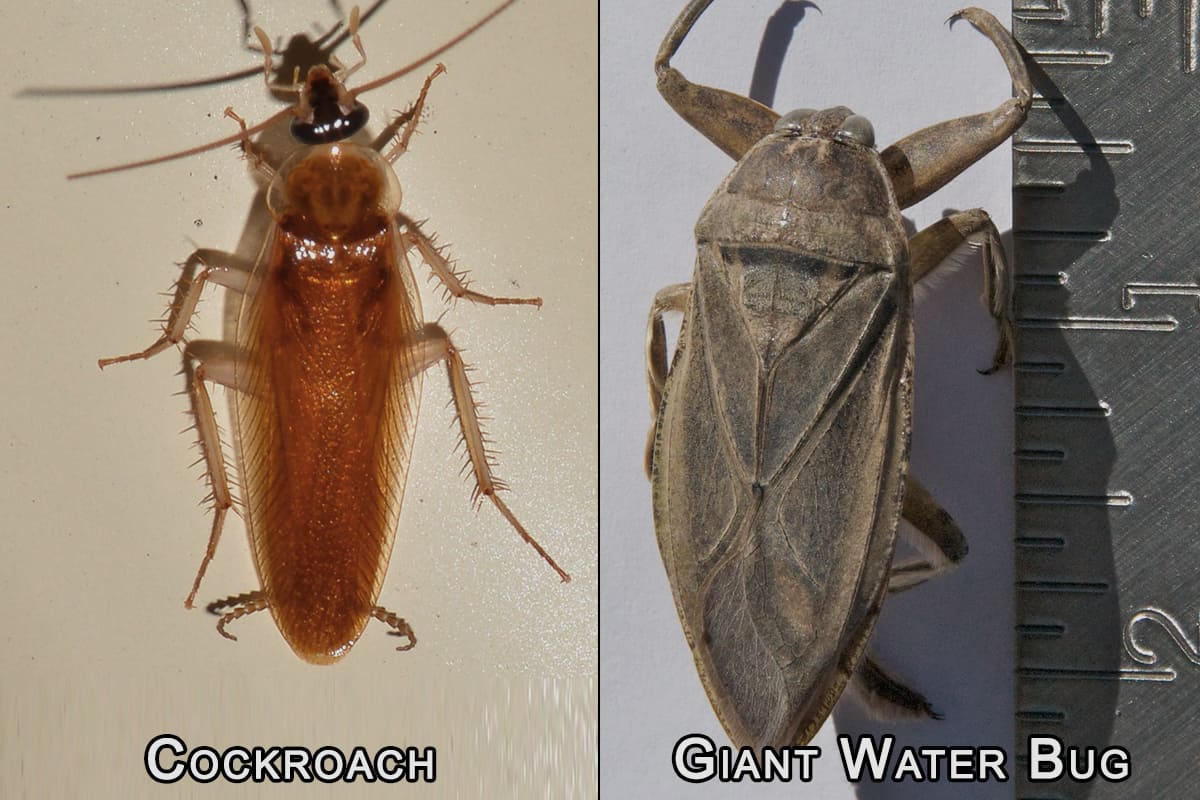
Among over 2,000 water bug species, giant water bugs are the types of bugs that look like cockroaches the most. They have brown and long flat bodies with small round heads. More than that, they also have antennae that they usually tuck against their heads like a cockroach. Plus, with the large size, giant water bugs look absolutely similar to large cockroaches at home. And just like the name suggests, water bugs can live on the water, and they can also swim. Because they are attracted to lights, sometimes they end up on your porch or parking lots.
While roaches are scavengers, giant water bugs are predators that catch prey by injecting their beak into the victim’s body. Their beaks pierce like a fang which they use to secrete toxin before sucking the guts of the victim. Water bugs can also bite humans, making them somehow worse than cockroaches. This is also why you should be careful when handling these bugs when removing them from your home.
Bug #4: May Beetle
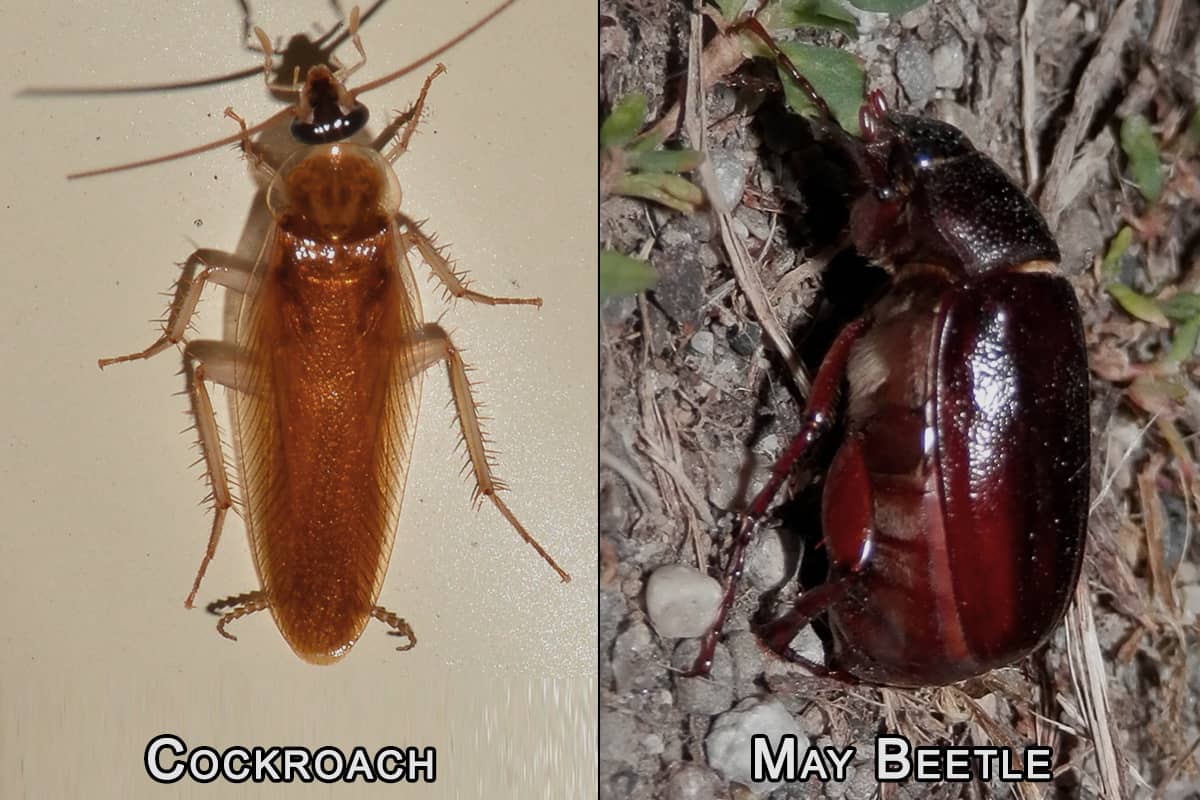
May beetles or June bugs are also among the bugs that look like roaches, and they are quite common. These beetles are reddish-brown to black in color, resembling some of the common roaches found in the house. You might come across these beetles during the evenings, and they are most active in spring. Another similar trait is that May beetles can also fly, just like some cockroach species out there.
June bugs are attracted to lights, so you may often see them on the patio or porch. They are active but clumsy fliers, so they often fly into windows and cling onto the screens. This is how most people come across them and tend to kill them. While roaches feed on organic and rotting matter, these bugs consume leaves and other vegetation. These bugs are harmless, and they don’t bite sting or spread diseases at all.
Bug #5: Palo Verde Beetle
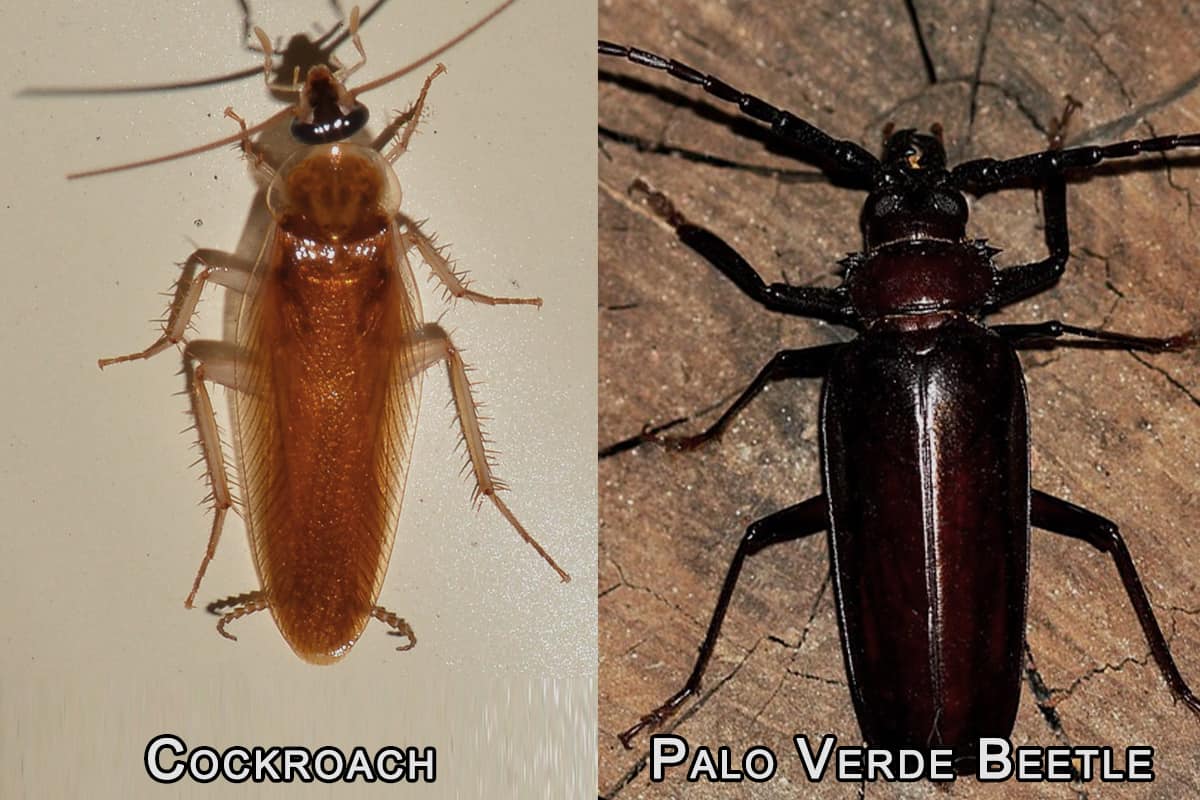
This is another beetle species that are among the types of bugs that look like cockroaches. When monsoon season passes, they emerge with their long black bodies, spindly legs, and lengthy antennae which is very similar to roaches. The overall appearance, color, and size of a palo verde beetle are very similar to the American cockroaches. While roaches are indoor pests, these beetles are rather a nuisance outdoors.
Palo verde beetles feed on wood, and they can kill the tree they infest, and the larvae are just the same. The larvae of these beetles consume the roots of the tree and damage it even more than the adults do. And the name says it all; they like to burrow themselves in palo verde trees. However, they also live in other hardwood trees such as cottonwood, elm trees, and mulberry trees. So if you come across one of these around your trees, treat them with pesticides.
Bug #6: Roly Poly
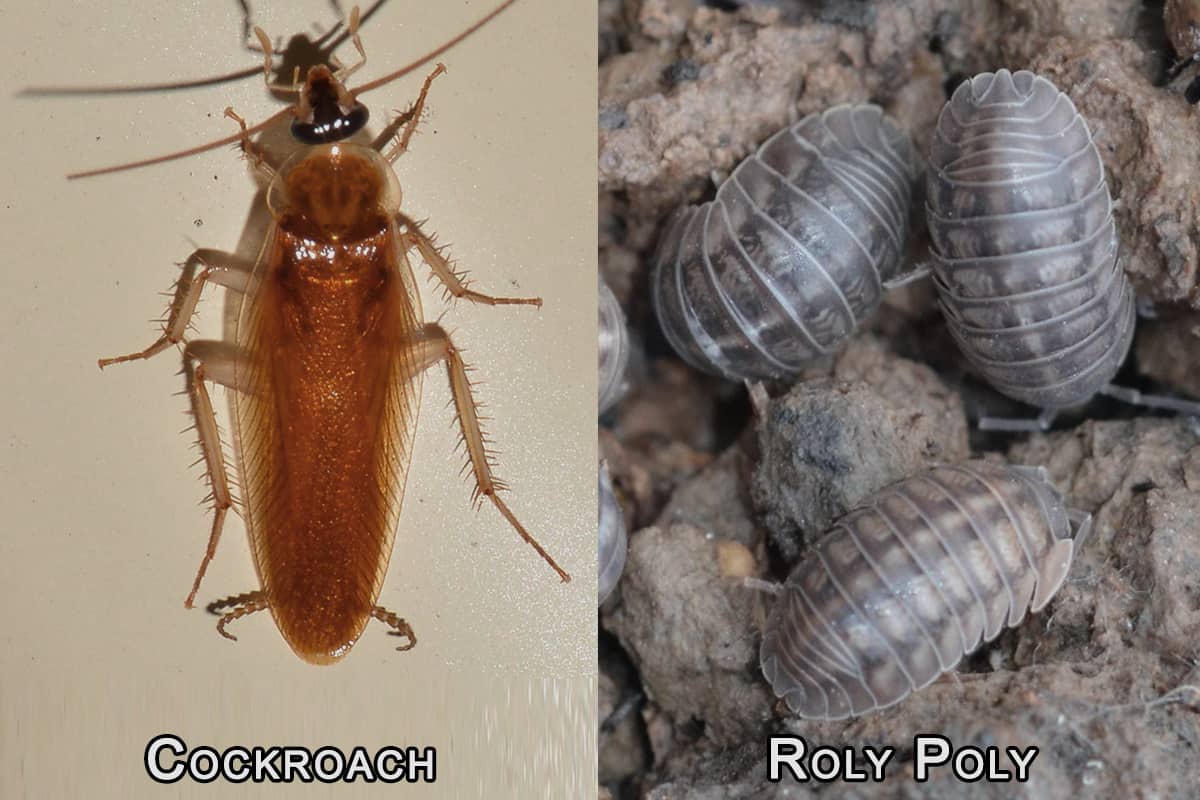
Also goes by the name of pill bugs or woodlice, roly-polies are isopods that live in moist areas. You can also find them around some decaying plant matter as well, and they are quite easy to notice. Being one of the bugs that look like roaches, pill bugs are not insects at all. They are actually crustaceans that curl up into a ball when disturbed or startled.
Roly-poly feeds on decaying plant material as well as living plants so that they can cause damage to your garden. When not feeding on the roots of your flowers or vegetables, they hide under leaf piles, logs, and damp areas. While looking a little creepy, these cockroach look-alikes don’t pose any harm to you. They neither carry diseases nor bite or string.
Bug #7: Wood-Boring Beetle

When it comes to the bugs that look like cockroaches, wood-boring beetles are always on the list. These bugs have a long black body with a short rounded head which is so similar to a roach. Although their antennae are shorter, they still research a cockroach at a quick glance. The wood-boring beetles lay their eggs inside the wood, and the larvae feast on the wood until they reach adulthood.
Once they become adults, they eat their way out and move to other trees to mate. These beetles like to feed on any hardwood, and their most favorite ones are ash, hickory, mahogany, and walnut trees. Where they eat is also where they live as they prefer to be in humid and warm temperatures. You may come across them at home when they enter through crawl spaces or firewood.
2. Common Cockroaches At Home
Generally, there are around 30 cockroach species that associate with human habits. However, the most common ones are just 5, and you are going to find out about them below. Let’s see which one among them is the species that you see at home.
2.1. American Cockroach
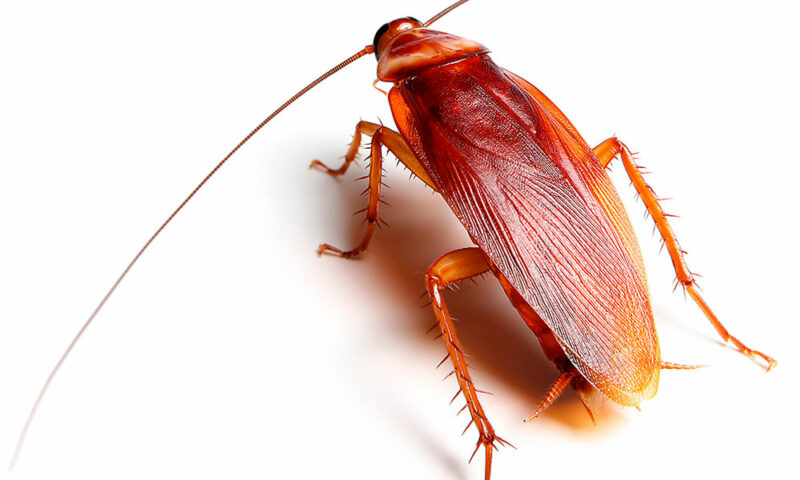
This is probably the most common type of cockroach that you will see, and they are almost everywhere. The American cockroach, aka the palmetto bug, is reddish-brown brown with a yellowish figure 8 pattern on its head. It has an oval body long antennae, and both males and females have wings that can fly short distances.
They are resilient pests that can live in extreme temperatures, and they can live for a week without their heads. It is not a myth, it is true, and they actually die because of starvation, not because they are headless. You must keep your household clean because of these cockroaches like dirty and damp areas. Most importantly, make sure that your kitchen sinks are clean and the bins are free from trash at night. If you suspect an infestation, contact a licensed pest control immediately to eliminate them.
2.2. Brown-Banded Cockroach

While being smaller than most common cockroaches out there, brown-banded cockroaches are very invasive species. These roaches got their name from the two light brown bands they have across their dark brownish bodies. Brown-banded cockroaches often scatter around bathrooms and kitchen sinks at night. Even worse, sometimes they also come out during the daytime, but you may not notice them due to their small size.
As an extremely invasive species, brown-banded cockroaches multiply their population fast. Females will lay around 14 egg capsules throughout her life, and each of which contains 10 to 18 eggs. The problem is that an infestation of these cockroaches can be difficult to detect. There is one way to tell; if you find one brown-banded cockroach, there are more of them somewhere. So make sure to contact a professional to take action before they populate more.
2.3. German Cockroach

Similar to the American cockroaches, German cockroaches are also one of the most common cockroach species found worldwide. While the American cockroaches infest our homes, German cockroaches tend to populate in many different areas instead. You are likely to find them in places like food-processing facilities, hotels, nursing homes, restaurants, and other institutional facilities.
German cockroaches are fond of humid and warm places that are close to food and moisture sources. Perhaps, the best way to prevent these roaches from infesting an area is to practice good sanitation. Keep the area clean, especially the kitchen sink, so that they won’t have anything to feed on at night. Cover all cracks and crevices, and vacuum the areas regularly to prevent moisture from building up.
2.4. Oriental Cockroach
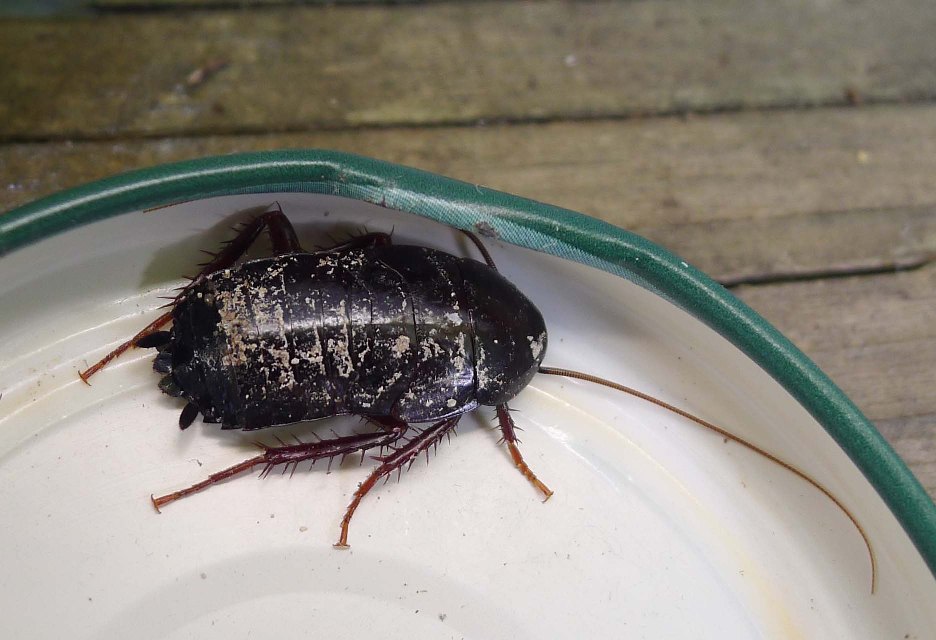
Originally from Africa, oriental cockroaches are large cockroach species that like living in damp areas. An oriental cockroach has a dark and smooth body, and the color can be dark reddish-brown color or shiny black. Despite being large, they can still their ways into your house through under the door or other gaps. You may also see them outside near moist gutters and other damp places around the house.
Because oriental cockroaches like damp sites, you can prevent their infestation by keeping the moisture from building up. You can use a dehumidifier so that the moisture won’t accumulate inside the house. As for the outdoors, keep the areas clean and dry by eliminating all standing water. You can also get rid of their food sources by cleaning up decaying organic matter, garbage, and starchy food.
2.5. Smoky Brown Cockroach
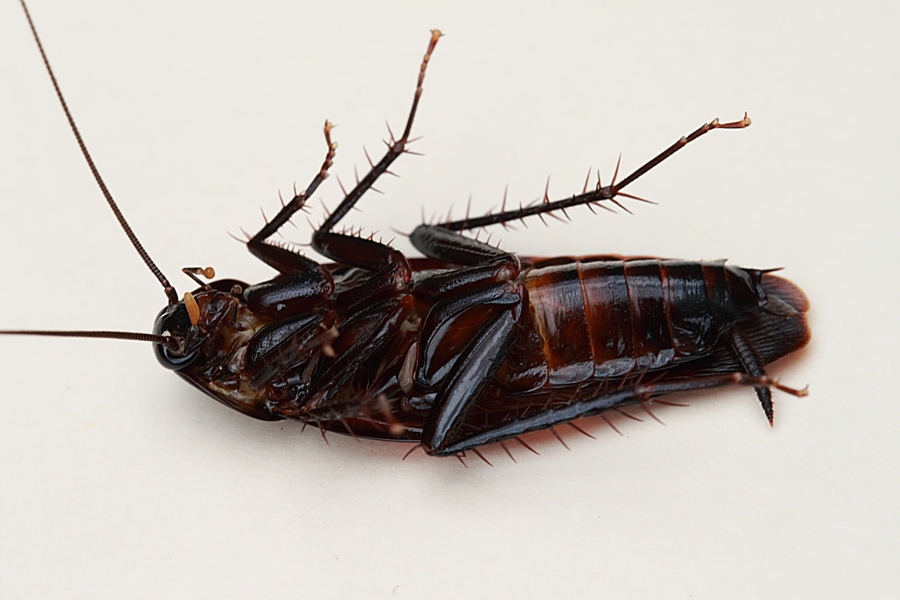
The smoky brown cockroach can survive both indoor and outdoor as long as the conditions are favorable for them. These roaches are large, and they prefer to live in warm places with high humidity, like wooded areas. They are often found in tree holes, under mulch, and other moist areas when their habitats are outdoors. Inside the house, they breed in attics, and their infestation grows fast.
This cockroach species is horrible because they also infest garbage and other dirty areas like sewers. As a result, smoky brown cockroaches are the potential carriers of disease. So if you come across one of these around the perimeter of your home, get rid of them immediately.
3. How To Get Rid Of Cockroaches
Cockroaches are annoying pests that are dirty and disgusting, but there are ways to eliminate them. There are a few methods that you can apply to get rid of them, including:
- Baking Soda: is easy to find and use, and it serves as a great cockroach eliminator. Place baking soda where roaches are common so that they can consume it. Baking soda creates gasses in their stomachs which causes them to burst.
- Boric Acid: is deadly to cockroaches upon contact because it sticks to their legs and wings. It is also deadly upon ingestion as it kills the roaches rapidly by attacking their digestive and nerve systems.
- Diatomaceous Earth: kills roaches by damaging their exoskeletons and dehydrating them to death.
[amazon_auto_links asin=”B01D60GAW2″]
3.1. Tips: Avoid Using Roach Bombs
Roach bombs are one of the methods that can get rid of cockroaches fast, but it comes with consequences. Also known as Foggers, roach bombs kill cockroaches by spraying pesticide into the air as it falls to the ground. Then the pesticide coats the indoor surfaces and kills cockroaches in the room.
The thing that you should know is that foggers are extremely toxic, and cleanup can be daunting also. More than that, everyone has to stay outside the house for up to two hours or even longer. While it can kill roaches on contact, it does not get all the pests since they can hide in other parts of the house. Since there are so many better and safer alternatives out there, I don’t recommend this method.
Final Thoughts
While there are many bugs that look like cockroaches, a number of those are not any good to have around either. I only hope that you are able to identify the real roaches so that you can take action on time. In case there is an infestation, knowing the type of cockroaches that are lurking inside your home is useful. Make sure to take action immediately so that these pests won’t bother your and your family.

